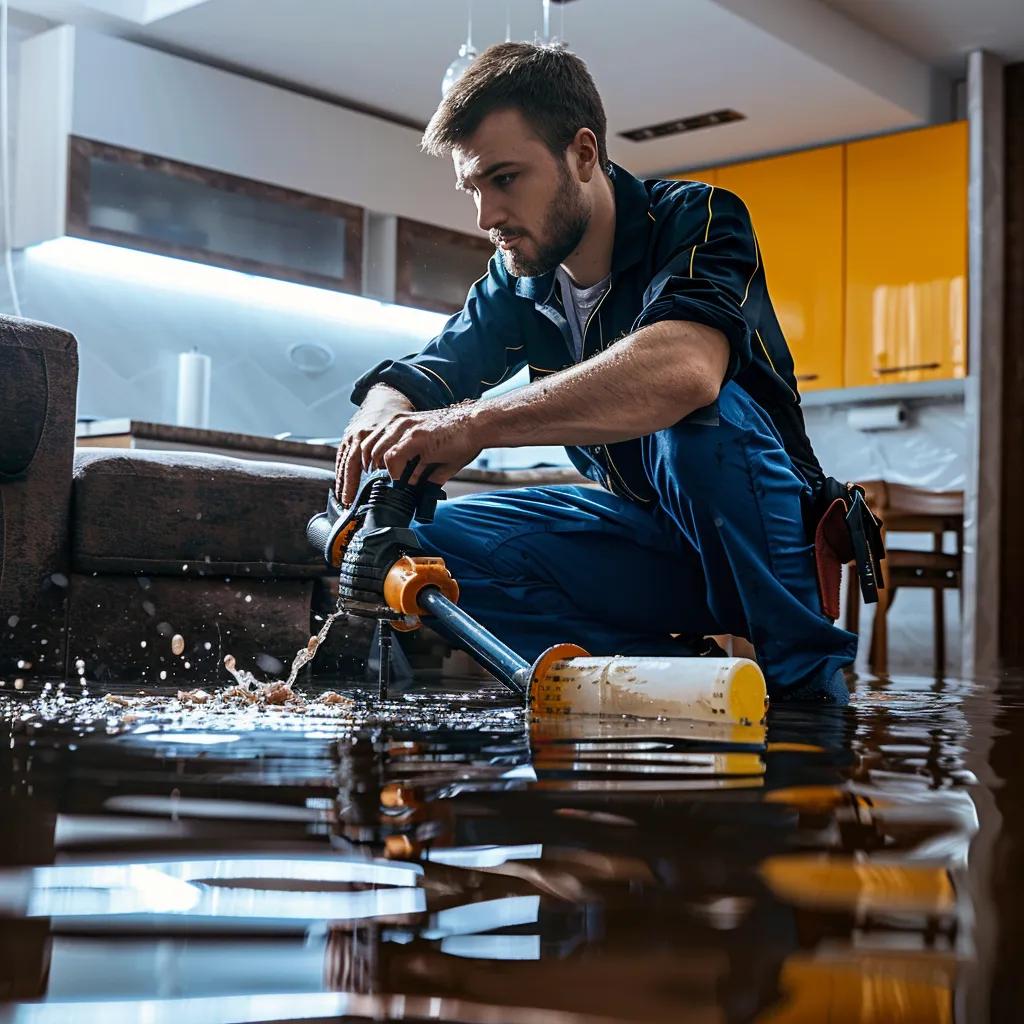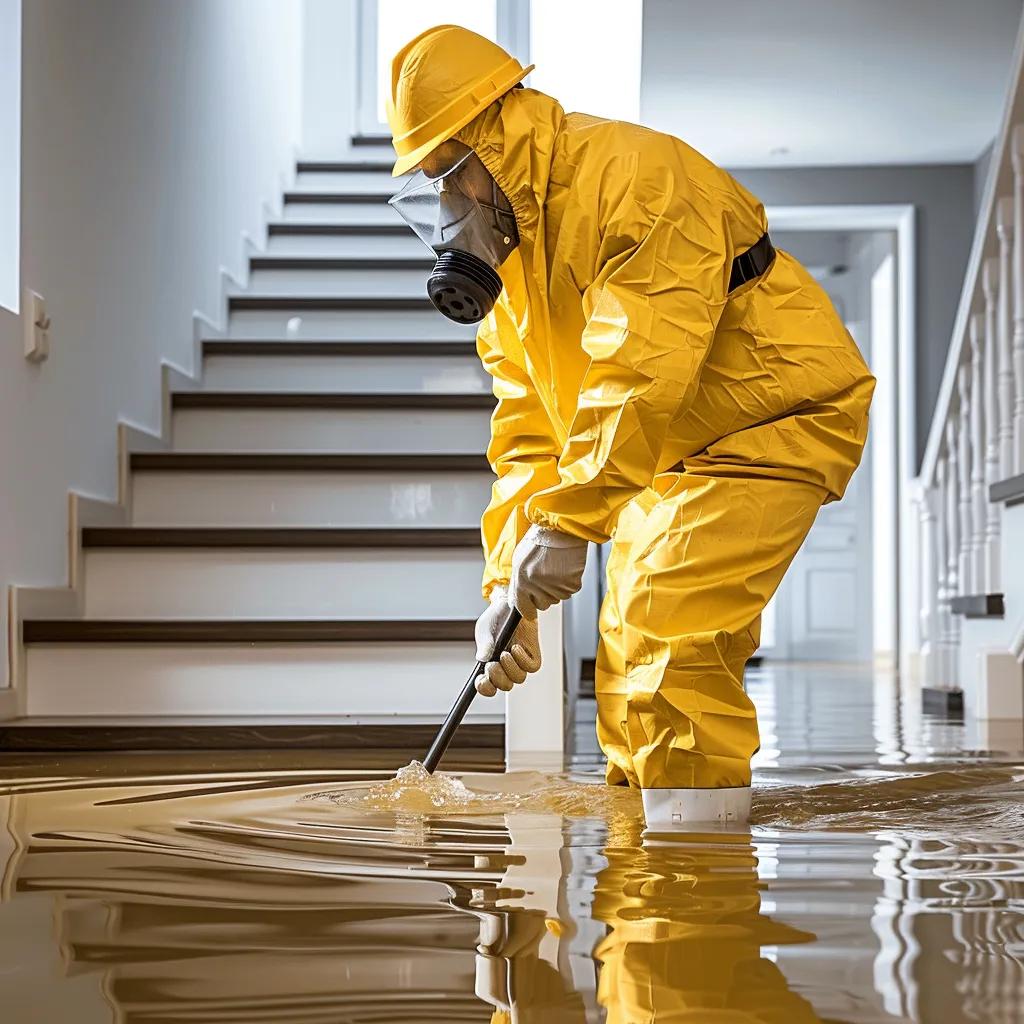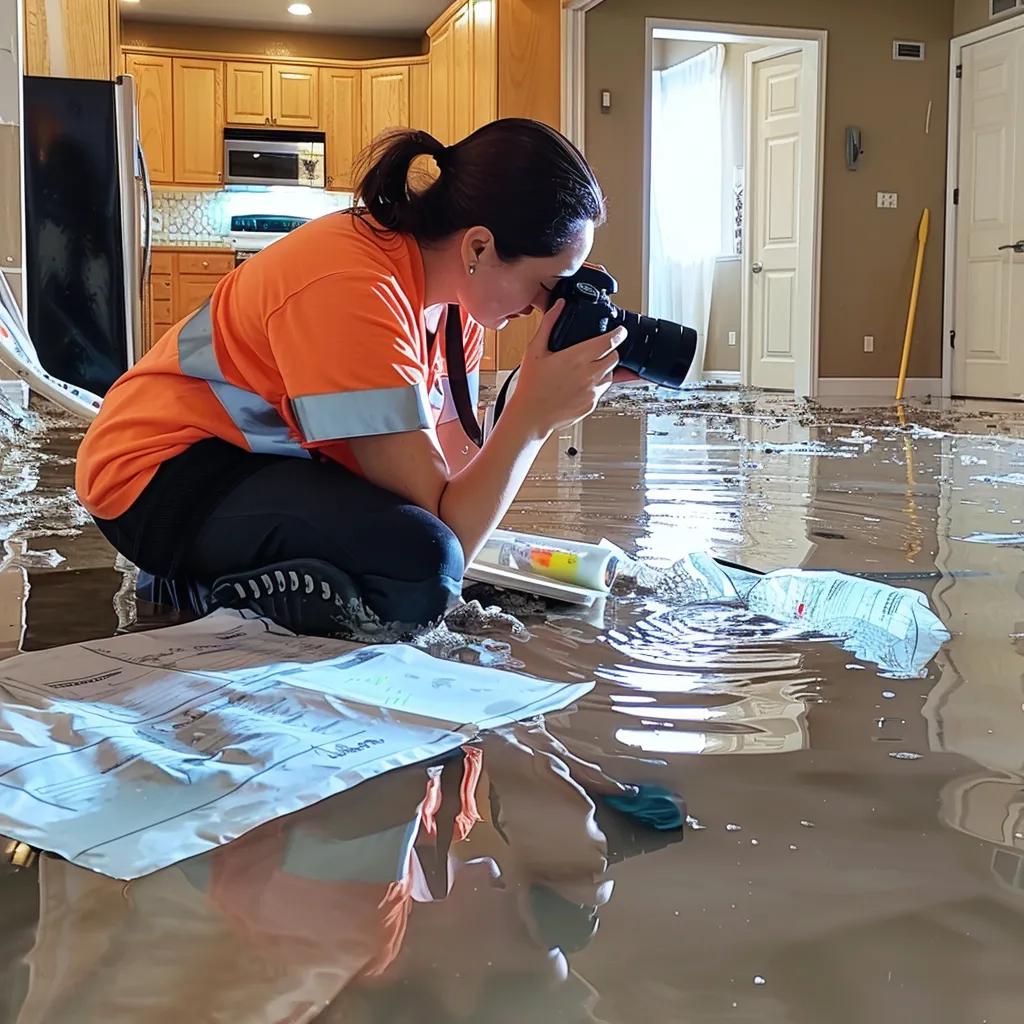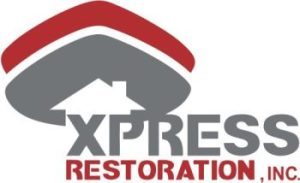Emergency Water Damage Cleanup Near Me: Steps to Take First

Emergency Water Damage Cleanup: First Steps for Rapid Restoration
Waterdamage causes over $13 billion in U.S. property losses annually, and rapid response is critical to prevent mold, structural collapse, and health hazards. In this guide, you’ll discover immediate safety measures, documentation tactics for insurance, waterdamage categories, the professionalrestoration process, mold prevention strategies, insurance navigation, cost factors, local San Diego expertise, and next steps—empowering homeowners to act with confidence and minimize downtime. Xpress Restoration’s 24/7 emergencywater removal and IICRC-certified technicians stand ready to restore your property swiftly and safely.
Water Damage Costs in the U.S.
Waterdamage results in substantial property losses across the United States, with costs exceeding billions of dollars annually. Rapid response is crucial to mitigate the damage and prevent further issues like mold growth and structural damage.
This statistic provides context for the importance of the information presented in the article regarding waterdamage cleanup and prevention.
What Are the Immediate Safety Steps After Water Damage?

Taking swift action to protect lives and property is essential when flooding strikes. You must secure the scene, shut off hazards, and wear protective gear to reduce electrocution risk and contamination exposure. The following steps establish a safe environment for cleanup and prepare for professional intervention.
- Turn Off Electricity at the Main Panel Ensure all circuits are de-energized before entering water-logged areas to prevent electrocution.
- Shut Off the Water Source Locate and close valves on burst pipes or damaged appliances to stop additional flooding.
- Wear Personal Protective Equipment Use waterproof boots, gloves, goggles, and N95 masks to guard against chemical or biological contaminants.
These precautions lay the groundwork for securing utilities and halting damage, leading us to utility shutdown protocols and hazard prevention.
How Do You Ensure Personal Safety During Water Damage Cleanup?
Personal safety during flood cleanup hinges on identifying immediate dangers and using appropriate protective gear. By recognizing electrical, structural, and contamination risks, you prevent injury and health issues while preparing for restoration efforts.
- Inspect for Downed Wires and Exposed Outlets before entry.
- Check Ceiling and Wall Integrity to avoid collapse or falling debris.
- Use Ground Fault Circuit Interrupters (GFCIs) for any equipment plugged in near water.
Proper hazard assessment not only protects you but also ensures the safe shutdown of utilities and structural evaluation.
When and How Should You Turn Off Utilities to Prevent Hazards?
Shutting off utilities within the first minutes of water intrusion stops electrocution, gas leaks, and fire hazards. Homeowners should locate main shutoff valves and circuit breakers to isolate water, electricity, and gas supplies quickly.
- Water Main Valve: Turn clockwise until fully closed to stop water flow.
- Electrical Breaker: Switch off all breakers in the dry section of the panel.
- Gas Meter Valve: Use a wrench to turn the valve perpendicular to the pipe.
Completing these steps halts further damage, enabling safe cleanup and restoration planning.
What Are the First Actions to Stop Water Flow and Limit Damage?
Stopping the source of flooding immediately limits water ingress and structural harm. Identifying malfunctioning appliances, ruptured pipes, or roof breaches allows for targeted interventions before professionals arrive.
- Place a bucket under dripping pipes and wrap with plumber’s tape.
- Use roof tarps or sealant to cover visible leaks until a permanent repair is possible.
- Disconnect faulty appliances (e.g., washing machines) and unplug them safely.
Limiting water flow preserves building materials and helps restoration teams focus on extraction and drying.
How Do You Document Water Damage for Insurance Claims?

Accurate and timely documentation of waterdamage strengthens insurance claims and accelerates reimbursement. By capturing thorough visual evidence and compiling detailed inventories, homeowners present a clear record of losses and speed up the claims process.
- Photograph every affected room from multiple angles, focusing on ceilings, walls, and flooring.
- Record short videos showing continuous water flow or structural movement.
- List damaged items with descriptions, purchase dates, and estimated values.
This documentation supports claim assessment and lays the foundation for contacting insurance professionals without delays.
What Photos and Videos Should You Take After Water Damage?
High-quality images and videos of wet materials and structural issues establish the extent of damage. Capture both wide shots and close-ups, focusing on discoloration, warping, and pooling water to illustrate loss severity.
- Wide-Angle Room Views – Show overall water coverage.
- Close-Up of Damaged Carpets, Drywall, and Furniture – Highlight saturation and stains.
- Video Pan of Water Flow and Leak Points – Demonstrate ongoing hazards.
Documented visuals create compelling evidence that reduces claim disputes and expedites settlement.
How Do You Create an Inventory of Damaged Property?
An itemized inventory clarifies what must be repaired, replaced, or restored. By grouping items by room and including estimated values, policyholders ensure complete coverage under their insurance policy.
| Room | Item | Condition |
|---|---|---|
| Living Room | Sectional Sofa | Water-stained |
| Kitchen | Laminate Flooring | Warped and buckled |
| Bedroom 2 | Wooden Nightstand | Swollen drawer |
This structured list clarifies losses and flows naturally into contacting insurers for claim initiation.
When Should You Contact Your Insurance Company?
- Call your insurer’s 24/7 claims hotline immediately after documenting damage.
- Provide initial overview of scope, cause, and estimated loss values.
- Request direct billing options for professionalrestoration services.
Early engagement with insurers streamlines approval for emergencyrestoration and prevents claim denials.
What Are the Different Types and Categories of Water Damage?
Understanding waterdamage categories guides cleanup protocols and safety requirements. Clean, gray, and black water each pose distinct health risks and require specialized restoration techniques to protect your home and occupants.
When comparing clean, gray, and black water, note contamination levels and necessary disinfection efforts.
| Entity | Contamination Level | Recommended Action |
|---|---|---|
| Clean Water | Low | Water extraction and drying |
| Gray Water | Moderate | Disinfection and controlled removal |
| Black Water | High | Full PPE, sewage removal, structural replacement |
Categorizing water types ensures that technicians apply appropriate safety measures and decontamination processes.
What Is Clean Water Damage and How Is It Handled?
Clean waterdamage originates from sources free of harmful contaminants, like burst supply lines or rainwater intrusion. Technicians extract standing water, dry surfaces, and monitor moisture levels to prevent mold and secondary damage.
- Use pumps and submersible vacuums for bulk water removal.
- Deploy industrial dehumidifiers and air movers to dry structural elements.
- Test moisture content with infrared cameras and hygrometers.
Timely treatment of clean waterdamage reduces restoration time and prevents mold proliferation.
How Does Gray Water Damage Differ and What Are the Risks?
Gray water carries moderate contaminants from appliances or sinks and can harbor bacteria or chemicals. Restoration involves cleaning, sanitizing, and ensuring microbial control to safeguard health.
- Disinfect with EPA-registered cleaners after extraction.
- Remove non-porous materials that retain odors or bacteria.
- Monitor humidity to deter microbial growth.
Addressing gray water incidents promptly preserves indoor air quality and limits health risks.
What Makes Black Water Damage the Most Hazardous?
Black water contains sewage, industrial effluent, or stagnant floodwater laden with pathogens and toxins. Restoration requires full protective gear, structural removal of porous materials, and professional waste disposal.
- Employ HAZWOPER-trained technicians to handle biohazards.
- Remove and replace drywall, insulation, and carpeting.
- Strictly follow local regulations for contaminated waste disposal.
Combating black waterdamage safeguards occupants from serious infections and structural decay.
How Do Flood Damage and Leak Damage Differ in Cleanup Needs?
Flooddamage often involves large-scale water intrusion with mixed contaminants, while leakdamage is localized and usually cleaner. Scaling restoration efforts to the damage extent ensures cost effectiveness and safety.
- Flood Cleanup: Full structural assessment, black water protocols, emergencydrying.
- Leak Cleanup: Targeted extraction, moisture mapping, surface sanitization.
Distinguishing flood from leak scenarios optimizes resource deployment and restoration timelines.
What Is the Professional Water Damage Restoration Process?
Professionalrestoration transforms water-logged properties back to pre-loss condition through systematic assessment, extraction, drying, sanitization, and repairs. This multi-step approach minimizes downtime, prevents mold, and restores structural integrity.
- Inspection & Moisture Mapping
- Water Extraction & Removal
- Drying & Dehumidification
- Cleaning & Sanitization
- Repairs & Reconstruction
Following these stages with advanced equipment and certified technicians ensures comprehensive recovery.
How Is Water Damage Assessed and Inspected by Experts?
Technicians use moisture meters, infrared cameras, and hygrometers to locate hidden water pockets and determine saturation levels. A thorough assessment maps damage severity and informs customized restoration plans.
- Scan walls, floors, and ceilings for moisture anomalies.
- Document structural integrity and material degradation.
- Develop a step-by-step remediation plan with estimated timelines.
Accurate inspection accelerates targeted interventions and prevents overlooked damage.
What Are the Techniques for Effective Water Extraction?
Industrial pumps, submersible vacuums, and portable extractors quickly remove bulk water and reduce drying time. By employing high-capacity equipment, restoration teams restore safe, dry conditions efficiently.
- Use truck-mounted pumps for large volumes.
- Deploy wet/dry vacuums for low-lying water in cavities.
- Apply extraction mats on carpets for thorough moisture removal.
Efficient extraction sets the stage for controlled drying and mold prevention.
How Do Drying and Dehumidification Prevent Further Damage?
Rapid dehumidification and airflow control inhibit mold growth and structural warping. Industrial dehumidifiers lower humidity below 40 percent, while air movers circulate air to evaporate residual moisture.
| Equipment | Function | Benefit |
|---|---|---|
| Desiccant Dehumidifier | Removes moisture from air | Lowers RH rapidly |
| Axial Air Mover | Circulates high-speed airflow | Speeds surface evaporation |
Proper drying methods preserve materials and prevent secondary issues.
What Cleaning and Sanitization Methods Are Used After Water Removal?
Technicians apply EPA-approved antimicrobials and detergents to disinfect surfaces and eliminate odors. HEPA-filtered vacuums remove particulates, while dry foggers reach hidden cavities, ensuring a hygienic environment.
- Scrub non-porous surfaces with antibacterial solutions.
- Fog antimicrobial mist into HVAC and wall cavities.
- Replace contaminated HVAC filters to improve air quality.
Comprehensive sanitization supports mold prevention and healthy living spaces.
When Are Repairs and Reconstruction Necessary?
Once structural drying and sanitization are complete, reconstruction restores functionality and aesthetics. Repairs may include replacing drywall, refinishing floors, and reinstating electrical components.
- Replace water-damaged drywall, baseboards, and insulation.
- Refinish hardwood floors or install new flooring.
- Test and reconnect electrical, plumbing, and HVAC systems.
This final phase returns your property to pre-loss condition and minimizes long-term disruptions.
How Can You Prevent Mold Growth After Water Damage?
Preventing mold within 24–48 hours of water exposure is vital to health and structural safety. Rapid drying, moisture monitoring, and early detection stop mold spores from colonizing and spreading throughout your home.
- Keep indoor humidity below 45 percent with dehumidifiers.
- Inspect hidden spaces behind walls and under floors within 48 hours.
- Apply mold-inhibiting sealants on vulnerable surfaces.
Effective mold prevention builds on controlled drying and ongoing vigilance.
What Are the Early Signs of Mold After Water Exposure?
Mold growth often presents as musty odors, dark spots on surfaces, and allergic reactions among occupants. Identifying these signs early permits immediate moldremediation and minimizes structural damage.
- Persistent Musty Smells in enclosed areas.
- Visible Discoloration on drywall, ceiling, or wood.
- Allergic Symptoms – sneezing, coughing, or skin irritation.
Early recognition of mold cues leads to prompt professional intervention.
How Quickly Can Mold Develop After Water Damage?
Mold spores can colonize damp areas within 24–48 hours of moisture exposure, accelerating health risks and material decay. Continuous humidity above 60 percent fosters rapid mold proliferation in hidden cavities.
- Monitor humidity daily with digital hygrometers.
- Inspect behind baseboards and inside cabinets within two days.
- Engage professionals if moisture persists beyond 48 hours.
Mold Growth After Water Damage
Mold can develop rapidly after water exposure, often within 24 to 48 hours, posing health risks and causing material decay. Controlling humidity and promptly addressing waterdamage are essential to prevent mold proliferation.
This citation supports the article’s emphasis on the urgency of addressing waterdamage to prevent mold growth.
Understanding mold timelines reinforces the urgency of rapid drying and monitoring.
When Should You Call Professionals for Mold Remediation?
- Contact remediation experts when mold returns after initial cleaning.
- Seek professional assessment for immune-compromised household members.
- Choose IICRC-certified technicians for large or toxic mold infestations.
Professionalremediation ensures thorough removal and prevents recurrence.
How Do You Navigate Water Damage Insurance Claims Effectively?
Navigating waterdamageinsurance claims requires understanding policy coverage, exclusions, and adjuster interactions. A clear roadmap minimizes surprises and ensures you receive entitled benefits for emergency cleanup and repairs.
- Review your policy’s waterdamage and flood provisions.
- Submit complete documentation with photos, videos, and inventories.
- Communicate proactively with adjusters to clarify coverage.
A structured approach to claims management speeds approvals and reduces out-of-pocket costs.
What Does a Typical Water Damage Insurance Policy Cover?
| Coverage Element | Included Scenarios | Excluded Scenarios |
|---|---|---|
| Burst Pipe Repair | Sudden supply line ruptures | Gradual leaks or neglect |
| Emergency Extraction | Immediate water removal | Flooding from natural disasters |
| Mold Remediation Rider | Mold from covered water events | Pre-existing mold or flood mold |
Knowing policy limits and exclusions avoids claim delays.
How Do You Prepare Documentation for Your Insurance Claim?
Thorough documentation consolidates all evidence of loss and expedites adjuster reviews. By organizing media, inventories, and professional estimates, policyholders strengthen their claim validity.
- Compile an itemized spreadsheet of damaged personal property.
- Attach photos and videos labeled by date and location.
- Include professionalrestoration proposals and cost estimates.
Well-prepared documentation smooths adjuster negotiations and claim settlement.
What Are Common Insurance Exclusions for Water Damage?
Policies often exclude flooddamage, sewer backups, and gradual deterioration. Riders may be required for natural flooding or sewer backflow, and maintenance neglect invalidates coverage.
- Flood Exclusions – Requires separate floodinsurance.
- Gradual Damage – Leaks over time without prompt repair.
- Sewer Backflow – Needs specific add-on coverage.
Recognizing exclusions guides you to purchase riders proactively and avoid claim denials.
How Do You Work with Insurance Adjusters During Claims?
Collaborating effectively with adjusters hinges on clear communication, guided inspections, and joint property walkthroughs. Providing comprehensive documentation and asking focused questions builds trust and expedites claim approval.
- Schedule on-site inspections with restoration experts present.
- Share moisture readings and repair estimates during walkthroughs.
- Confirm covered line items in writing before commencing repairs.
Partnership with adjusters ensures accurate coverage and minimizes scope disputes.
What Factors Affect the Cost of Emergency Water Damage Cleanup?
Several variables influence restoration costs, including damage category, affected square footage, and drying time. Understanding cost drivers helps homeowners budget and explore mitigation strategies to reduce expenses.
| Factor | Impact on Cost | Mitigation Strategy |
|---|---|---|
| Water Category | Higher contamination → higher cost | Fast containment and source control |
| Affected Area Size | More square feet → more labor | Quick extraction to limit spread |
| Drying Duration | Longer drying → equipment rental | Use rapid-response dehumidification |
| Structural Repairs Needed | Reconstruction adds expenses | Selective material replacement |
Budget planning based on these factors empowers you to manage restoration investments effectively.
What Are the Average Costs for Water Damage Restoration?
Typical waterdamage cleanup ranges from $1,200 to $6,000, with severe black water or flood scenarios reaching $50,000+ depending on damage scope and reconstruction needs. Rapid emergency response often incurs higher initial costs but prevents more extensive restoration later.
- Minor clean water events: $1,200–$2,500
- Moderate gray water events: $2,500–$7,500
- Severe black water or flood events: $10,000–$50,000+
Cost transparency helps homeowners secure accurate estimates and insurance alignment.
Which Factors Influence Cleanup and Repair Expenses?
Labor rates, material costs, equipment rental, and regional pricing dynamics in San Diego all shape final invoices. Local availability of certified technicians and urgent 24/7 deployment may add premium charges.
- Technician certifications (IICRC) can raise hourly rates.
- Specialized equipment (thermal imaging, truck-mounted pumps) affects rental fees.
- Emergency dispatch at odd hours often includes surge premiums.
Understanding cost components helps negotiate service scopes and adjust budgets.
How Can You Save Money on Water Damage Cleanup Services?
Preventive maintenance, quick response, and bundling services reduce overall costs. Homeowners can lower expenses by addressing minor leaks, investing in preventive devices, and selecting full-service packages.
- Install Leak Detection Sensors to catch issues early.
- Schedule Regular Plumbing Inspections to avoid catastrophic failures.
- Opt for Comprehensive Restoration Packages to minimize separate fees.
Proactive strategies enhance protection and deliver cost savings over time.
Why Choose a Local San Diego Water Damage Restoration Company?
A San Diego–based restoration provider offers rapid response, familiarity with local building codes, and specialized knowledge of coastal humidity challenges. Local expertise ensures efficient coordination with insurers and compliance with regional regulations.
- 24/7 Emergency Dispatch within San Diego County.
- IICRC-Certified Technicians trained on local waterdamage scenarios.
- Direct Billing to Insurance Companies for streamlined claims.
Partnering with a local company accelerates restoration and leverages community trust.
What Are the Benefits of Hiring IICRC-Certified Technicians?
IICRC-certified technicians adhere to industry standards for assessment, extraction, and drying, ensuring safe, effective restoration. Certification verifies knowledge of water categorization, microbial control, and structural drying protocols.
- Consistent application of best practices for contamination control.
- Precise moisture measurement and documentation for insurance.
- Proven training and ongoing competency updates.
Certified expertise delivers peace of mind and superior restoration outcomes.
How Does 24/7 Emergency Service Improve Restoration Outcomes?
Immediate deployment of crews and equipment minimizes saturation time, curbing mold growth and structural damage. Around-the-clock availability guarantees help arrives when disasters occur, reducing long-term repair costs.
- Rapid arrival within hours of dispatch prevents secondary issues.
- Night-and-weekend response avoids prolonged exposure.
- Continuous monitoring of drying processes through project lifecycle.
Uninterrupted emergency service underpins a successful, swift recovery.
What Local San Diego Expertise Does Xpress Restoration Offer?
Xpress Restoration’s deep roots in San Diego enable customized strategies for coastal humidity, older home plumbing challenges, and local building codes. Our team’s community knowledge ensures accurate planning, rapid permitting, and seamless claims coordination.
- Familiarity with San Diego zoning, permitting, and inspection protocols.
- Experience handling coastal flood zones, slab leaks, and hillside runoff.
- Established relationships with local insurance adjusters and contractors.
Local proficiency ensures efficient restoration tailored to regional conditions.
What Are the Next Steps After Emergency Water Damage Cleanup?
Post-cleanup vigilance and proactive maintenance secure long-term protection against mold and future leaks. Scheduling follow-up inspections and investing in preventive upgrades fortify your home against water threats.
- Monitor humidity levels for two weeks after drying completes.
- Arrange periodic structural inspections and plumbing evaluations.
- Install backflow preventers, sump pumps, and water alarms.
Ongoing care preserves restored conditions and reduces the risk of repeat emergencies.
How Do You Monitor for Secondary Damage and Mold Growth?
Continued monitoring with moisture sensors and visual inspections catches emerging issues before they escalate. Early detection of damp spots or musty odors triggers targeted remediation and avoids costly reconstruction.
| Monitoring Method | Frequency | Purpose |
|---|---|---|
| Digital Hygrometer | Daily for 2 weeks | Track humidity levels |
| Infrared Moisture Scan | Weekly for 1 month | Identify hidden moisture pockets |
| Visual Wall/Ceiling Check | Bi-weekly | Spot discoloration or warping |
Consistent monitoring supports timely interventions and sustained safety.
When Should You Schedule Follow-Up Inspections or Repairs?
Follow-up inspections within 30–60 days after restoration confirm that drying and repairs hold under normal living conditions. Promptly addressing cracks, settling drywall, or minor leaks prevents escalation.
- Schedule structural and moisture assessments one month post-cleanup.
- Address paint peeling or floor buckling as early warning signs.
- Engage licensed contractors for any repair deficiencies.
Proactive inspections maintain home integrity and validate restoration quality.
How Can You Prevent Future Water Damage in Your Home?
Implementing preventive measures such as regular maintenance, smart monitoring systems, and structural upgrades reduces the likelihood of future flooding events. A holistic prevention strategy protects investments and ensures peace of mind.
- Install Automatic Shut-Off Valves on major water lines.
- Maintain Gutters, Downspouts, and Yard Grading to direct runoff away from foundations.
- Service Sump Pumps Annually and replace batteries before wet seasons.
Long-term prevention practices safeguard your property and complement professionalrestoration services.

